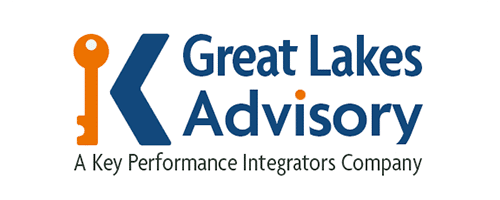Every business relies on processes. Some are more efficient than others. If yours is suffering from bottlenecks, redundancies, and general inefficiency, then process mapping can reveal opportunities for simplification, optimization, and standardization. Process maps are applied to a range of processes, from manufacturing a pair of sneakers to the flow of materials or the travels of fresh produce to consumers and even constructing a house. In this blog, our team explains process mapping basics and why it’s beneficial for businesses, including best practices on how to do process mapping.
What Is Process Mapping?
Process mapping is a powerful technique used to depict process steps visually in diagrammatic form. It illustrates how a business process should function from start to finish. This technique usually involves creating a “map,” also referred to as a flowchart, process flowchart, or workflow diagram. A process map reminds us how the strength of a chain depends on its weakest link. It should always:
- Describe the flow of materials, information, and documents
- Illustrate tasks contained within a process
- Show how the tasks transform inputs into outputs
- Demonstrate decisions that need to be made along the chain
- Show essential interrelationships, and interdependence between process steps
What Is the Purpose of Process Mapping?
The purpose of building a process map allows any team member to easily understand how a process is completed without verbal explanations. Mapping a process from start to finish provides a better understanding of how an entire process works and identifies inefficiencies. It’s standard to use process mapping for analysis, training, integration, or process improvement. If you need to communicate a complex process, rectify a recurring problem within a process, or coordinate the responsibilities of multiple members, developing a process map will subsequently serve as a valuable guide.
Why Is Process Mapping Important for Your Business?

- Document your business process: Process flow mapping establishes a blueprint for how business is conducted. It’s like a snapshot of how you do business now and offers a framework to evaluate how you could do things more efficiently in the future.
- Ensure compliance: A library of process maps is an effective approach to illustrate compliance. It makes processes more understandable and shows where work needs to be done to achieve or improve compliance.
- Support continuous improvement: Business processes evolve as methods and technology improve. Once you have a process map, it serves as a baseline for continuous improvement, ensuring your business retains its competitive edge.
- Easy knowledge transfer: Process maps capture knowledge that may otherwise be lost when employees move on from your organization. These maps remain a resourceful tool that saves staff time, particularly new employees who benefit from having up-to-date forms and documentation to support their role.
- Empowers staff: It sounds obvious, but when employees appreciate the importance of their role, they are more likely to take the initiative and implement positive changes to your work environment.
Great Lakes Advisory’s experts have developed process maps for businesses in a variety of industries to streamline their operations and reduce costs. Schedule your appointment today!
What Does a Process Map Look Like?
The type of process map you select depends on the process, as well as your business needs. There are also different levels of granularity that process maps can illustrate:
- Level one: Lists the operational levels of the organization.
- Level two: Showcases end-to-end processes across operational areas.
- Level three: Illustrates the roles and associated steps required to complete a specific process within an operational area.
Loosely speaking, process maps tend to look like a flow chart or variation thereof. Below are the most common types:
SIPOC Map
SIPOC (pronounced sigh-pock) stands for suppliers, inputs, processes, outputs, and customers. It provides a birds-eye overview of an organization’s entire process that is critical to maintaining business operations, ensuring quality and customer satisfaction. We refer to these as high-level process maps because they do not contain much detail.
Deployment Map
Sometimes called a cross-functional flowchart, deployment maps articulate the steps and stakeholders of a given process. Each participant in the process is displayed on the map, constructed as a matrix, highlighting the relationships between them in addition to the workflow. These maps are especially useful for revealing inefficiencies and duplication.
Detailed Process Map

Value Streaming Map
Value stream mapping offers a deeper analysis of factors and activities involved in delivering value than a standard process map does. Unlike other process maps, these quantify the time and resources needed at each stage and are usually used when planning process improvement. Value streaming maps require some skill to develop, due to the amount of detail required.
Swimlane Map
These level three maps articulate processes on a micro-level. It’s similar to a flowchart; however, it places events and actions in “lanes” to delineate a person/group responsible for a specific sub-process. Swimlane maps possess three elements: time, people (or job functions), and tasks/processes. They are ideal for identifying gaps or unnecessary steps that can decrease lead time.
How to Do Process Mapping: Basic Process Map Symbols
So, what does a process map look like? Essentially, a flowchart of symbols. Each element in a process chart is represented by a specific symbol. Process map symbols are commonly called flowchart symbols, flowchart shapes, or flow diagram symbols. They are part of the Unified Modeling Language (UML), which is an international standard for drawing business flow diagrams. There are over 30 process map symbols which are categorized under process/operation symbols, input and output symbols, branching and control of flow symbols, file, and information storage symbols, and data processing symbols. Below are suitable ones needed for basic process mapping:
- Flowline/arrows: Connects any two steps and indicates the path or process direction.
- Terminal activity: An oval shows where the process starts and stops. A single process may have multiple terminals.
- Activity: This rectangle describes the work task occurring at that point in the process. Usually, only one task is included in each activity symbol so that specific redundancies or bottlenecks can be pinpointed.
- Decision: A diamond symbol displays a question that has several optional answers or flows that lead away from it. Answers may be simple “yes” or “no” or specifically described choices, and they are labeled with connector lines.
- Delay: A d-shaped symbol describes when a process comes to a temporary halt until what has to happen before the process resumes.
- Inspection: A circle symbol that depicts that something needs to be tested, audited, reviewed, or inspected.
- Page connectors: When a process map takes up more than one page, two circle connectors containing matching letters are used to indicate the end of one page and the beginning of another.
- Document: A rectangle with a wavy bottom line represents a document people can read.
- Sub-process: A rectangle with double vertical lines indicates predefined sub-processes.
- Data: Parallelograms represent process inputs and outputs.
Because these symbols are moderately technical, process flowcharts usually include a symbol key to explain the meaning of each. For regular process mapping, basic flowchart shapes are acceptable.
How to Build Process Maps
Regardless of the process map you choose, your workflow diagram should always provide a clear understanding of activities, flow, people, and resources necessary to complete a process from start to finish. Following these mapping steps can help you get started:
Step 1: Identify the Process
First, determine what your process flow diagram is about. Are you attempting to communicate a new process to a team? Do you need to solve inefficiencies or bottlenecks? Or, are you merely documenting complex processes employees need help understanding?
Step 2: List All the Activities Involved
Don’t worry about the order at this stage of building a process map; just make a list of all the activities involved in the process and the job role responsible for each. It’s a good idea to get everyone’s input, so you can accurately account for every detail. The type of map you’re creating will dictate the level of detail you require. You’ll also want to come to a uniform decision on where the process starts and finishes.
Step 3: Write Out the Sequence

Step 4: Draw the Map
Select the correct mapping symbols and draw out the process. Creating a process map can be as simple as drawing with pen and paper, or as complex as using workflow management software. The latter saves time, standardizes templates, and makes it easy to keep updated digital documents.
Step 5: Finalize and Get Feedback
Review your functional process chart with other stakeholders to make sure everyone agrees with how the process is mapped and understands it. This step is another chance to double-check nothing has been left out and there are no redundancies.
Step 6: Analyze for Improvement
A “completed” process map is a living document that accurately describes the current workflow. It can change at any time. During this step, you should analyze it again to figure out if there are still ways to improve the process. Think about which tasks can be completed more efficiently, and whether any steps can be eliminated. Be sure to update your map should you make any improvements.
Process Mapping Best Practices
Keep these processing mapping tips in mind to maximize effectiveness and ensure best practice:
- Establish the boundaries of the process you’re documenting so that only relevant information is included.
- Make sure you have clear goals and only map processes that have a clear output.
- Use standardized notation (symbols) so everyone understands.
- Always get feedback from everyone involved in the process.
- Map out the process in its current state, not the perfect one you aspire to; otherwise, you won’t be able to make effective improvements.
Need Help Process Mapping?
Now that you know how to create a process map and the amount of detail it requires, you might want to consider hiring professionals to help you. Process mapping is highly beneficial when done right, and who better to help than Great Lakes Advisory? We are a leading operations consulting firm, dedicated to helping you improve your business processes. Contact us to develop process custom mapping that increases your profitability!
